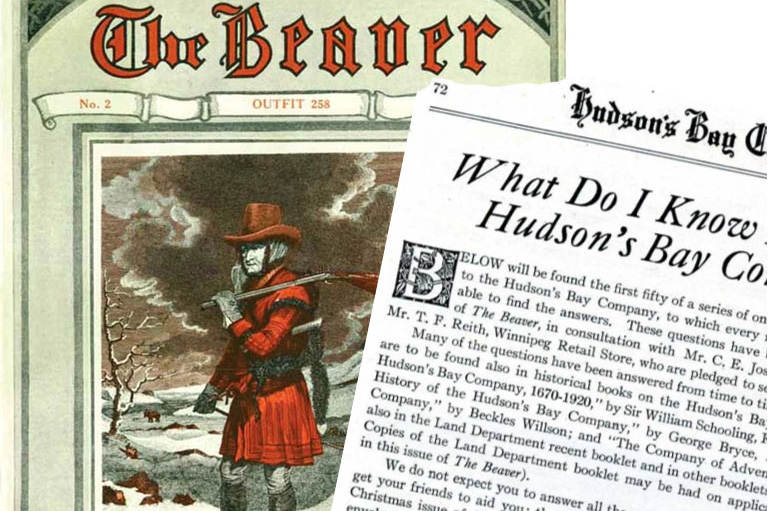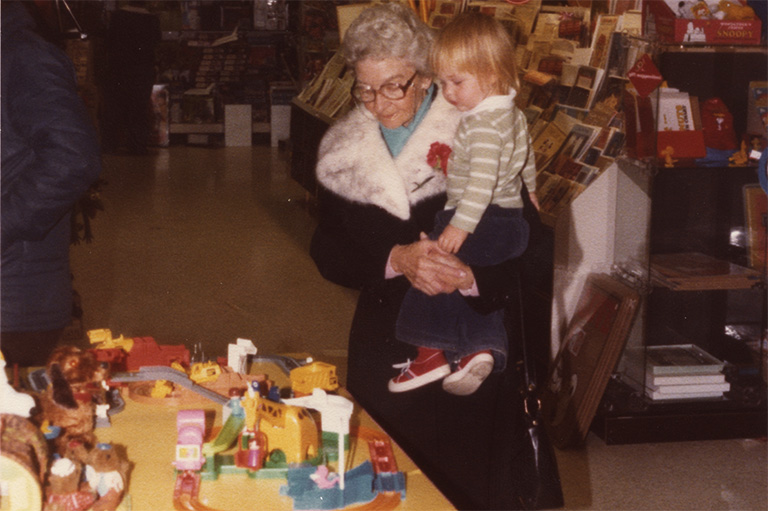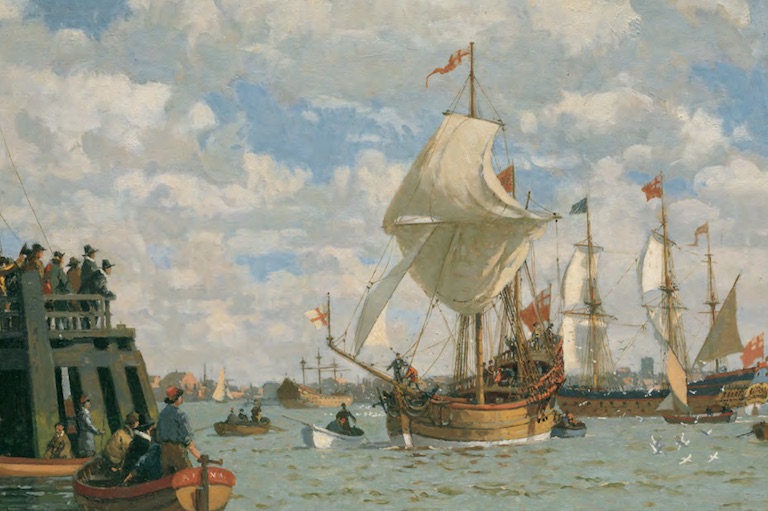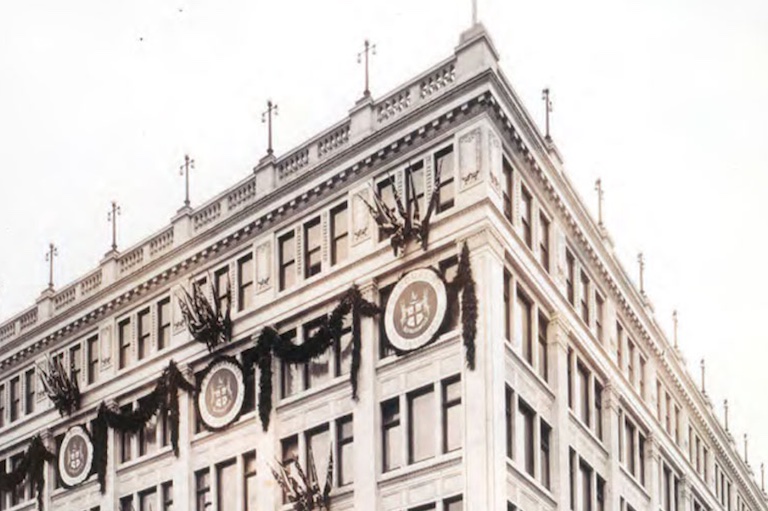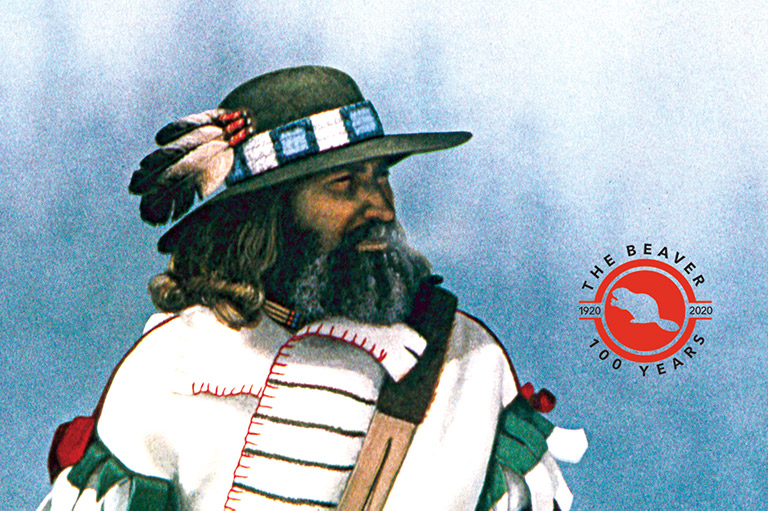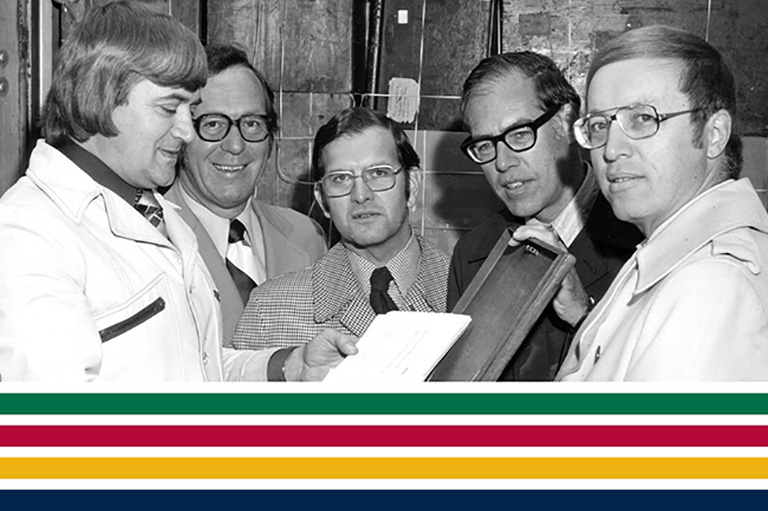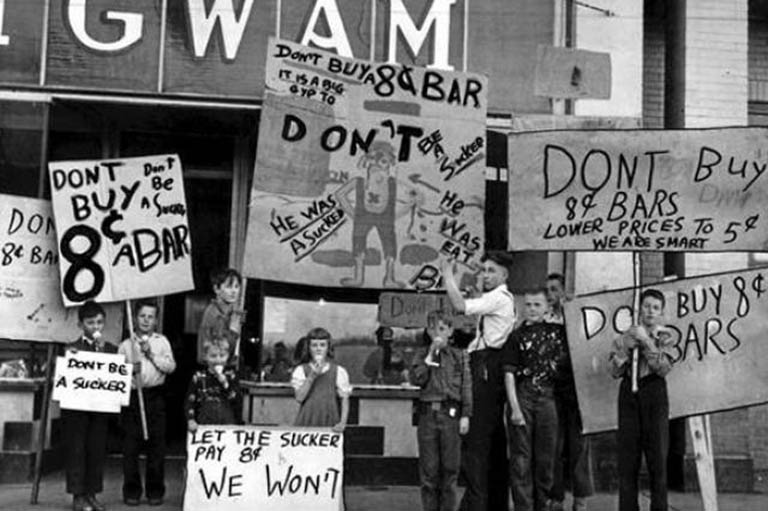The Rise of Retail
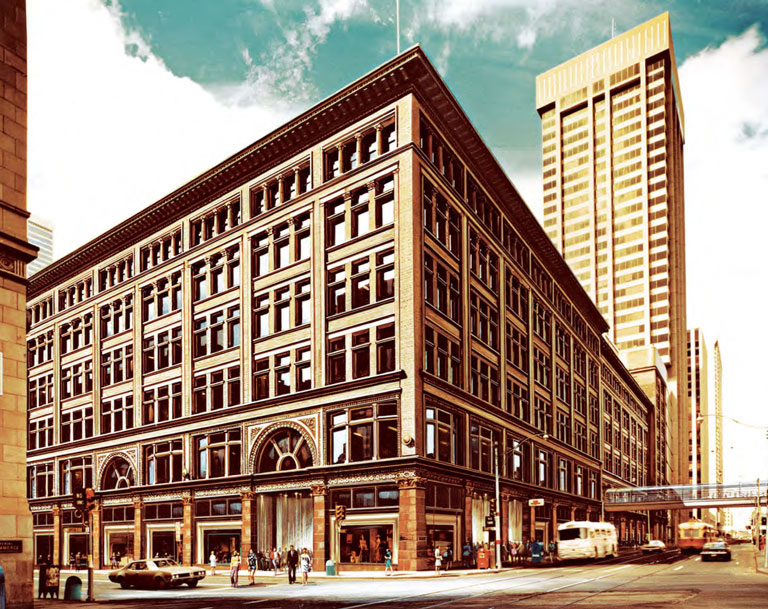
The early spring of 1967 — Canada’s centennial year — was bitterly cold across the prairies. Then came the great blizzard of March 29. The storm roared across Saskatchewan, pummelling the land of the living skies with high winds and heavy snow that snarled streets and shut down public transportation. It really wasn’t fit to be outside. But nothing — not even a blizzard — was going to stop the people of Saskatchewan from enjoying legendary savings.
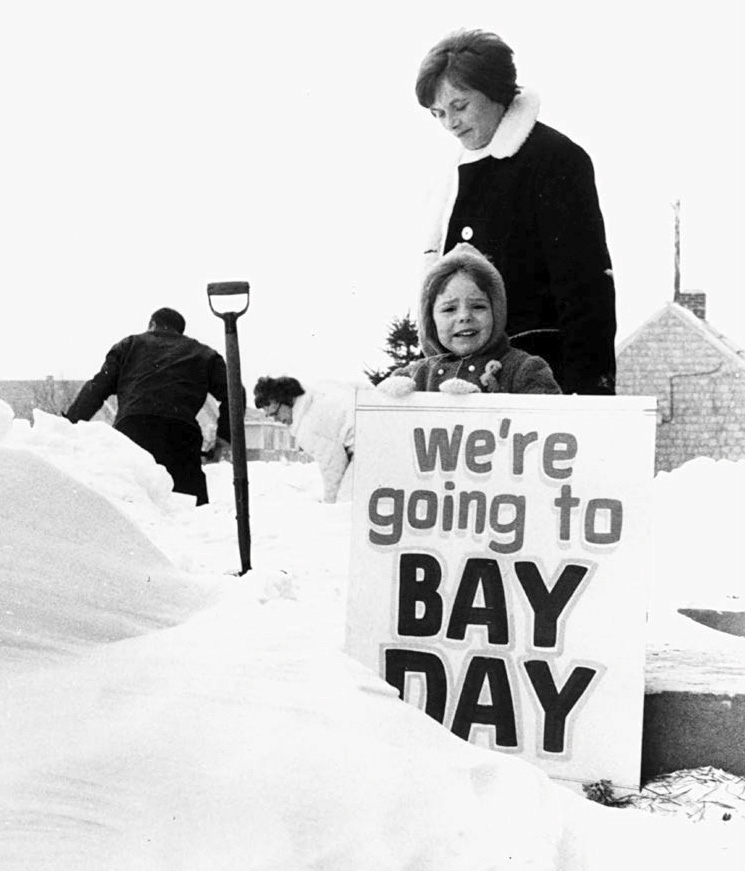
The next morning, many residents braved the blustery weather to shovel out from the snow. Among them was a tiny tyke standing beside a chest-high snowbank in Saskatoon and holding a sign that spoke volumes about HBC’s sway over shoppers in the sixties: “We’re going to Bay Day.”
Bay Days, of course, is one of HBC’s most popular and enduring sales promotions. And the 1967 photograph of the little Saskatoon child heading to Bay Days illustrates the impressive brand loyalty HBC was able to build in just a few short decades as it transitioned a network of sales shops into a national, and today international, retailing giant.
To understand how HBC was able to accomplish this astonishing feat, it’s necessary to go back to the period just after the 1869 transfer of Rupert’s Land to Canada. The late-nineteenth century was an era of upheaval and change in the Canadian Northwest. Societies, economies, and traditional ways of living were upended.
On the prairies, the dramatic decline of the bison resulted in great hardship for Indigenous peoples. At the same time, the Canadian government signed a series of numbered treaties with Indigenous peoples that enabled it to build a railway linking British Columbia with the rest of Canada.
The railway had a major impact on the country — and on HBC. Trains carried tens of thousands of immigrant settlers to the West. This influx was a boon for HBC, because it coincided with a decrease in interest in furs; after enjoying more than two centuries of popularity, fur was falling out of fashion.
The transition to retail was a natural evolution for the Company. For more than two centuries, HBC had expanded throughout North America, building a network of more than five hundred outposts that stretched from the Atlantic, to the Pacific, to the Arctic.
As immigrants flooded into the West, HBC was ready to supply them with everything they needed, from pots and pans to seeds, supplies, and more.
HBC also owned plenty of land to sell to settlers — more than 2.8 million hectares — thanks to the terms of the Rupert’s Land transfer. In 1874, the Company created a land department to organize the surveying and sale of this property. The man placed in charge of the land department, Donald Smith, would years later play a pivotal role in the creation of the Canadian Pacific Railway.
Efforts to diversify the Company had begun decades earlier, thanks to Sir George Simpson, the governor of HBC’s Northern Department in the early 1800s. Simpson was a visionary who willingly embraced new ventures, such as felling timber in the Ottawa Valley and commercial fishing on the Great Lakes.
-
 Vernie Brown, on the right, a sales clerk at the HBC's downtown Calgary location, completes a transaction for a customer in 1961.HBC Corporate Art, Artifact, Image and Reference Collection
Vernie Brown, on the right, a sales clerk at the HBC's downtown Calgary location, completes a transaction for a customer in 1961.HBC Corporate Art, Artifact, Image and Reference Collection -
 Teens take part in a beauty course at the HBC store in Victoria, British Columbia, in 1960.HBC Corporate Art, Artifact, Image and Reference Collection
Teens take part in a beauty course at the HBC store in Victoria, British Columbia, in 1960.HBC Corporate Art, Artifact, Image and Reference Collection -
 The Flour-Mills Brothers Quartet poses behind an HBC microphone stand in the late 1930s. All four men were HBC employees in Victoria, British Columbia.HBC Corporate Art, Artifact, Image and Reference Collection
The Flour-Mills Brothers Quartet poses behind an HBC microphone stand in the late 1930s. All four men were HBC employees in Victoria, British Columbia.HBC Corporate Art, Artifact, Image and Reference Collection
During the nineteenth century, HBC also began selling salmon and cranberries on the west coast. Salmon was shipped as far away as England, Hawaii, and Australia. HBC even entered the ice business, carving frozen blocks from glaciers in northern British Columbia to send to San Francisco during the California gold rush.
The variety of HBC goods for sale was matched only by the many methods of paying for them. Since hard currency was rare at remote outposts, traders found innovative ways to barter for the goods they needed, including fur trade tokens made of wood, ivory, or shells; later versions were typically made from metal.
“We had a store, and the idea was we ... bought their furs in exchange for supplies the trappers needed,” recalled Wulf Tolboom, an HBC trading post manager who worked in the Northwest Territories during the mid-twentieth century. “There was no currency exchanged whatsoever. We used tokens. Each pelt was worth so many tokens, and as I traded we took the tokens off the table. [The trappers] never took them home, they always left [the tokens] with us. Whatever was left was a credit on the books.”
By the late 1800s, most HBC fur trade outposts had embraced the transition to sales shops. But, as increasing numbers of people moved from rural areas to towns and cities, it became clear that HBC’s future lay in a then-revolutionary concept: the department store.
The rise of department stores coincided with the urbanization movement of the late 1800s and early 1900s and was aided by improvements in roads and rapid transit, like buses and subways, that allowed more people to converge in downtown areas.
The first Canadian department store was Morgan’s, founded in Montreal by Henry Morgan in the mid-1800s. (HBC acquired Morgan’s in 1960.)
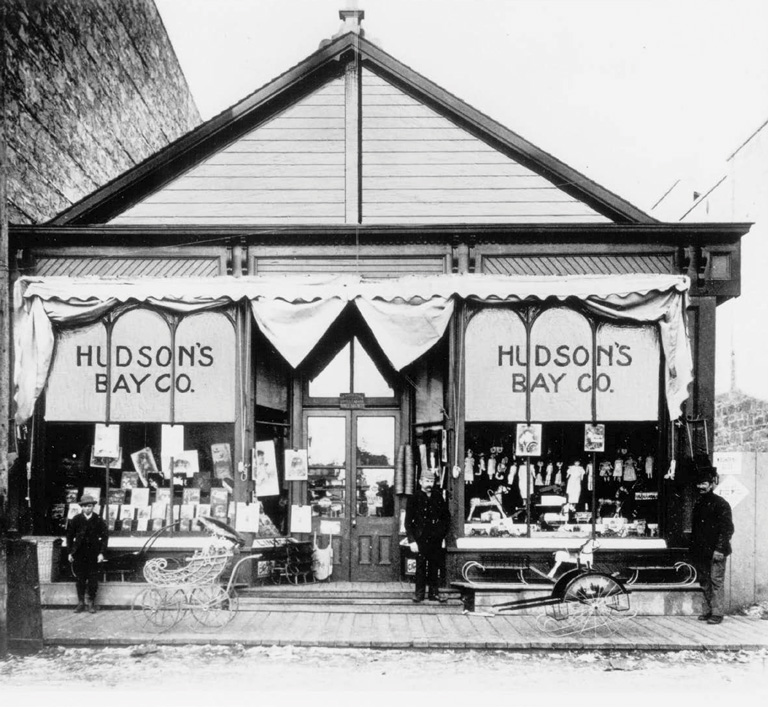
HBC followed suit in the early 1900s. Beginning in 1913, HBC opened six flagship department stores across Western Canada, in Calgary, Edmonton, Victoria, Vancouver, Saskatoon, and Winnipeg.
Large even by today’s standards, many of the flagship locations were the biggest stores of their time. They were also the cities’ largest importers, employed the most staff, and had the greatest sales volumes of any sector.
Department stores had a tremendous impact on society in general and introduced many new technological marvels to Canadians. For instance, department stores offered many people their first glimpses of escalators, elevators, air conditioning, electric lighting, steel-frame construction, and fire-proofing. The stores also helped to spur mass production and gave rise to the culture of consumption and fashion. Meanwhile, the evolution of the credit system allowed more people the option of paying for purchases over time, thereby enabling them to buy items that were previously unaffordable. Credit was now extended to the masses.
Department stores also played a pivotal role in women’s rights. In the nineteenth century, shopping became an important outlet for women’s independence. At the time, women in urban areas often were not permitted to take part in social interactions unless accompanied by a chaperone or by their servants. However, it was socially acceptable for women customers to shop alone. As a result, department stores became places of leisure, social interaction, and mobilization for women. Department stores also became key employers of women, allowing them to pursue a professional career and to financially support themselves and their families.
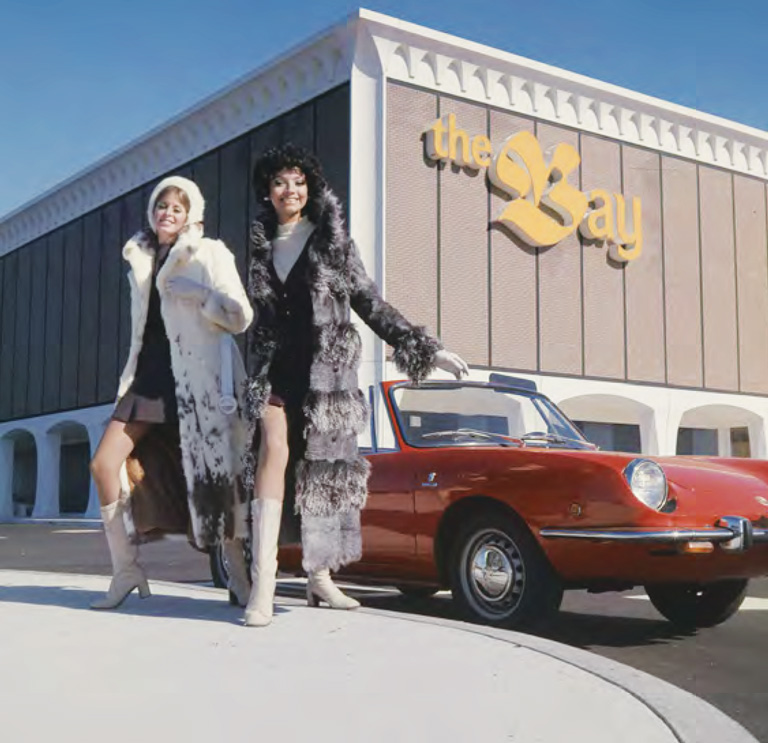
Over time, the stores became the cultural and social hubs of their communities. Department stores were natural meeting places and offered everything from art exhibitions to trade shows, music recitals, dances, public lectures, and fine dining.
By the middle of the twentieth century, HBC had stores in most major cities in Canada, thanks to a series of acquisitions of other department store chains, including Cairns, Zellers, and Simpsons. All of these chains shared HBC’s willingness to change with the times. Over the decades, HBC embraced innovations such as mail-order and catalogue sales and experimented with new sales strategies and concepts such as distribution chains and inventory control. Stores began to offer specialty services such as home delivery, in-store groceries, pharmacies, restaurants, postal and telephone services, fur storage, and recreational facilities. As the retail industry matured, advertising and branding became increasingly important.
In 1970, HBC marked its three-hundredth anniversary by officially becoming a Canadian company. Until then, the Company had legally been a British company. After the Company was rechartered as a Canadian corporation, its head office relocated from Winnipeg to Toronto in 1974.
The ensuing decades have seen the company continue to adapt and to innovate with the times, embracing new technologies such as e-commerce and expanding into new markets. Over the past three and a half centuries, the company transformed itself from a risky fur-trading venture centred on Hudson Bay to a leading international retailer — a story whose future chapters have yet to be written.
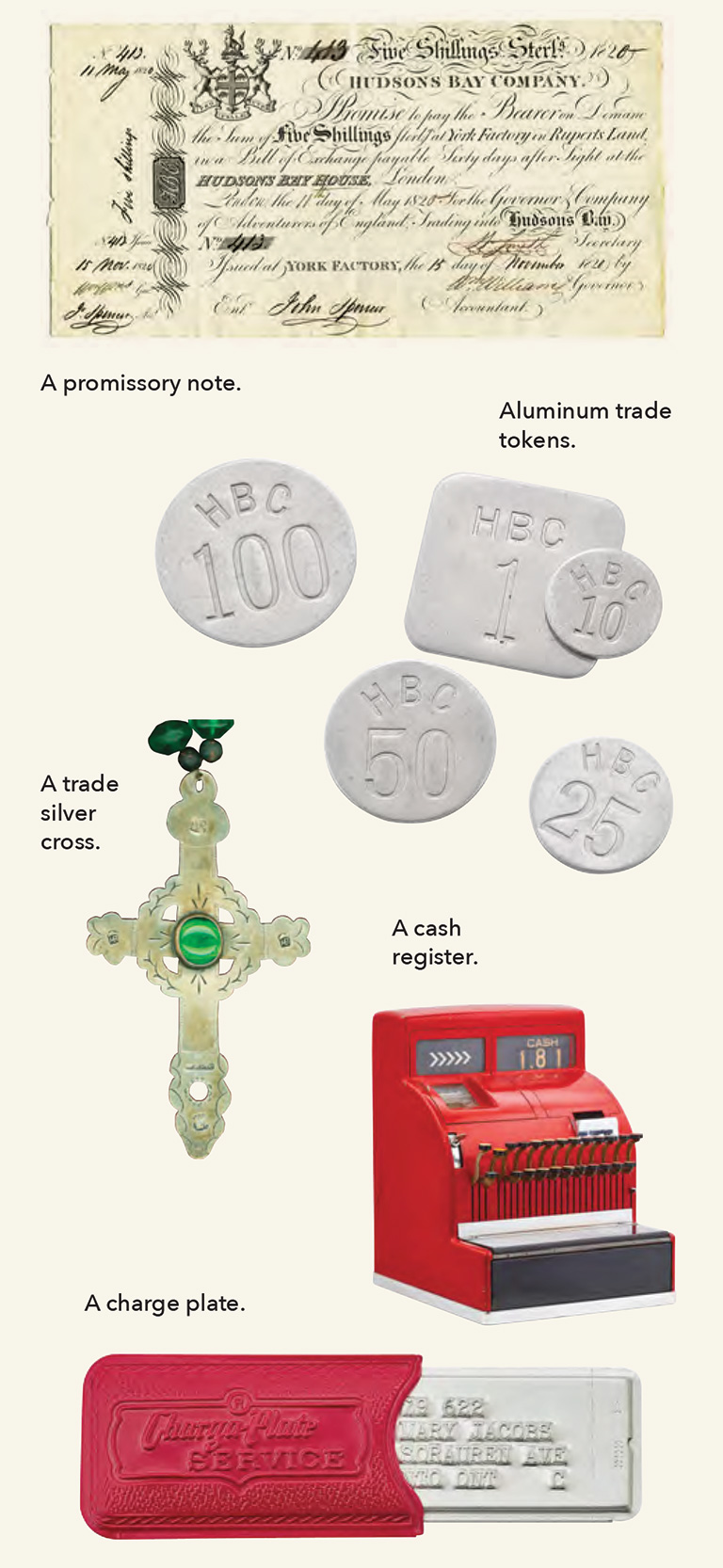
MONEY MATTERS
The early fur trade revolved around bartering furs for European-made goods.
Over time, new forms of exchange emerged, including “trade silver” (silver items created specifically to be traded to Indigenous traders in exchange for furs), promissory notes, and HBC tokens, before giving way to the cash- and credit-based economy of the retail era.
Themes associated with this article
Advertisement
You might also like...

Canada’s History Archive, featuring The Beaver, is now available for your browsing and searching pleasure!

Beautiful woven all-silk bow tie — burgundy with small silver beaver images throughout. This bow tie was inspired by Pierre Berton, inaugural winner of the Governor General's History Award for Popular Media: The Pierre Berton Award, presented by Canada's History Society. Self-tie with adjustments for neck size. Please note: these are not pre-tied.
Made exclusively for Canada's History.

